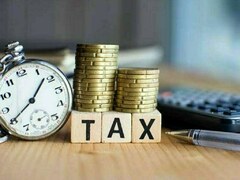As the telecom authorities prepare for a mobile spectrum auction next month, there is renewed debate around the issue of pricing of spectrum in Pakistan. One awaits the release of the auction’s Information Memorandum from the PTA, with a hope that the pricing for the next auction will include criteria that justify whatever per MHz price is eventually set by the government. (Read more: “Upcoming spectrum auction”).
For its part, the policy regime on spectrum auctions is unpredictable, albeit a “rolling spectrum strategy” has been prepared by the PTA. But so far, the pattern is such that only when the operators are found starving for more spectrum and hence more inclined to play ball does the government enter the market to offload some spectrum. But since pricing is often on the high side, operators grumble later on that they’re left with little to spend on network rollouts using that same spectrum.
The abrupt timeline of spectrum auctions is not conducive for development of ICT-based services. The CEO of a leading cellular company recently claimed in a newspaper article that only a third of available spectrum has been put to use in Pakistan. If this is true, it points towards a large-scale and artificial scarcity of spectrum, created entirely by the government. What is scarce gets pricey! And when operators spend less or cut corners when it comes to ensuring quality of service KPIs, there is limited accountability.
While operators have commercial concerns and they exist to make money, there is still a case for timely release of spectrum at reasonable prices in the interest of reducing the digital divide and improving economic well-being at large. But if a scarcity is allowed to continue, it will have negative implications for the wider economic growth and human development in the country.
For instance, while the authorities are happy at reaching 100 million broadband connections recently, the real situation isn’t that rosy. The more reliable and high-quality fixed broadband service (DSL, FTTH, etc.) is a fraction of the 100-million pie. And the rest is mobile broadband (3G and 4G), whose usage is mostly urban centric. As per the latest PSLM survey, only 34 percent of households have Internet and and only 45 percent of individuals own a mobile phone. There are stark gender and urban-rural divides as well. (Read more: “Demystifying digital divide”).
While the above-mentioned problems cannot be blamed entirely on spectrum pricing and availability, there is no denying that the release of an adequate and affordable amount of spectrum on a predictable, periodic basis can play an important role in the spread of ICT-based services in under-served and un-served areas. Other elements hampering ICT uptake and usage include high broadband taxes, pricey smartphones, limited focus towards rural connectivity, and cultural barriers impacting women.
There are some who advocate for the release of fresh spectrum without charging any fee. This has indeed happened during Covid-19 in some other countries, as telecom authorities tried to avoid network coverage and quality issues in the face of increased data demand during the pandemic. Can this work in Pakistan? Well, the fiscal realities suggest that this proposal will be a non-starter. The solution perhaps lies somewhere in the middle. If authorities reduce spectrum fee, more capital spending can flow towards expanding telecom networks and making ICT services accessible to many more millions.
























Comments
Comments are closed.